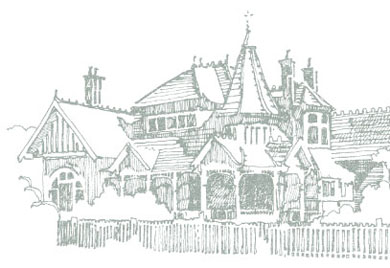
OUTSIDE: > steeply pitched terracotta tiled roofs, usually with a gable end facing the street; early examples may be slate with terracotta embellishments > extensive decorative embellishment, including terracotta ridge cappings, finials, dragons and gargoyles; fretted frieze panels and post brackets, turned verandah posts, chimney cornices and terracotta pots > leadlight or rectangles of coloured glass to windows > fretwork featuring patterns ranging from geometric to extravagant Art Nouveau designs
|
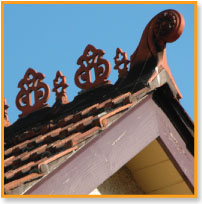
|
GARDEN: > fences usually timber pickets, sometimes with fretted picket heads > palms are popular and native trees begin to be incorporated
|
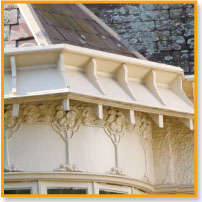
|
INSIDE: > ceilings sometimes divided into panels ornamented with plaster straps and shallow patterns with Art Nouveau motifs > fireplaces with ingle-nooks in very large houses > elaborate wallpapers > painted plaster walls with picture rails and sometimes wallpaper, pressed metal or timber
|
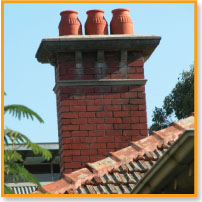
|
COLOUR & DESIGN NOTES: > strong colours, textures and ornament applied fairly evenly over the whole building > red brickwork with flush joints and tiled roofs > gable ends rough cast or stucco, sometimes left natural grey or painted cream > timber mouldings and battens to gable ends usually painted a dark colour > other woodwork painted cream, brown or green > brickwork rarely painted, red oxide used in association with tuck-pointing |
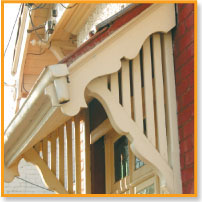
|
EXTERIOR COLOURS: |
||||
Light Straw |
Light Cream |
Manilla |
Pale Green |
|
DETAIL COLOURS: |
||||
Dark Brown |
Brilliant Green |
Pale Cream |
Olive Green |
|
HISTORY: > post-Depression domestic architecture is less ornate than Late Victorian > Art Nouveau style of decoration becomes popular > preference for natural building materials like red brick and timber > Marseilles tiles, initially imported from France, become the typical material for roofs > by 1890 cable trams extend from city centre to emerging suburbs > Federation inspires a search for an identifiably Australian architectural style |
